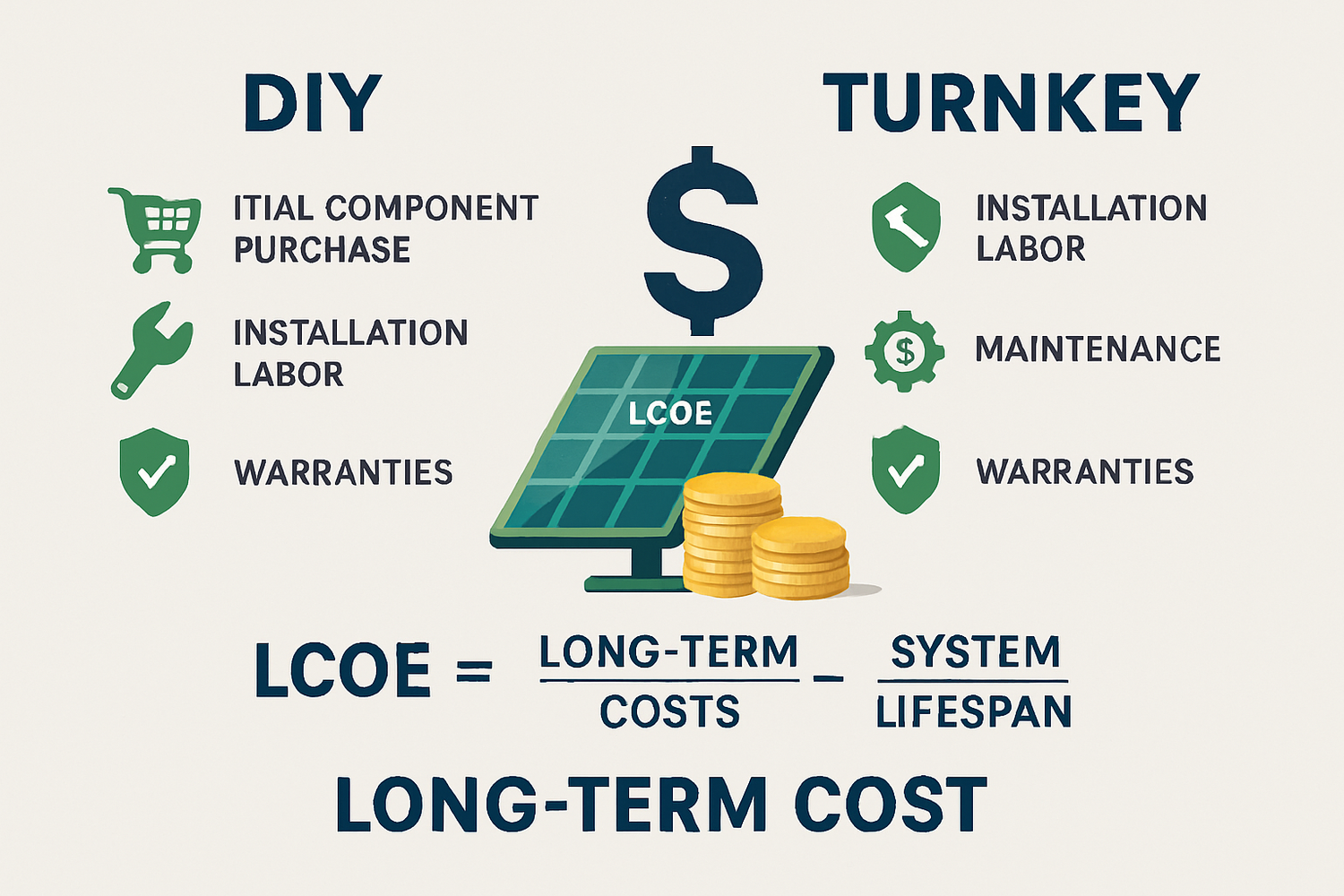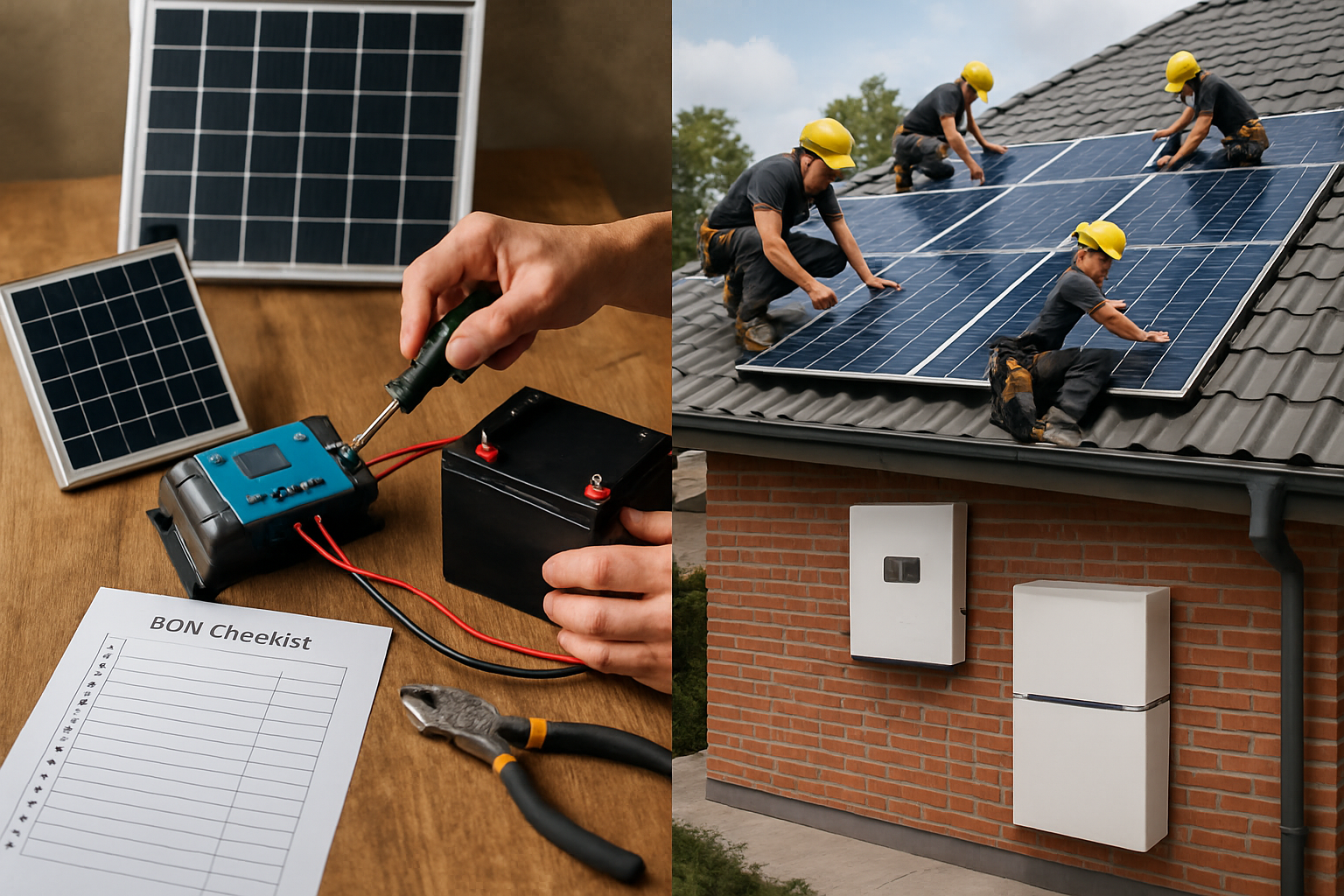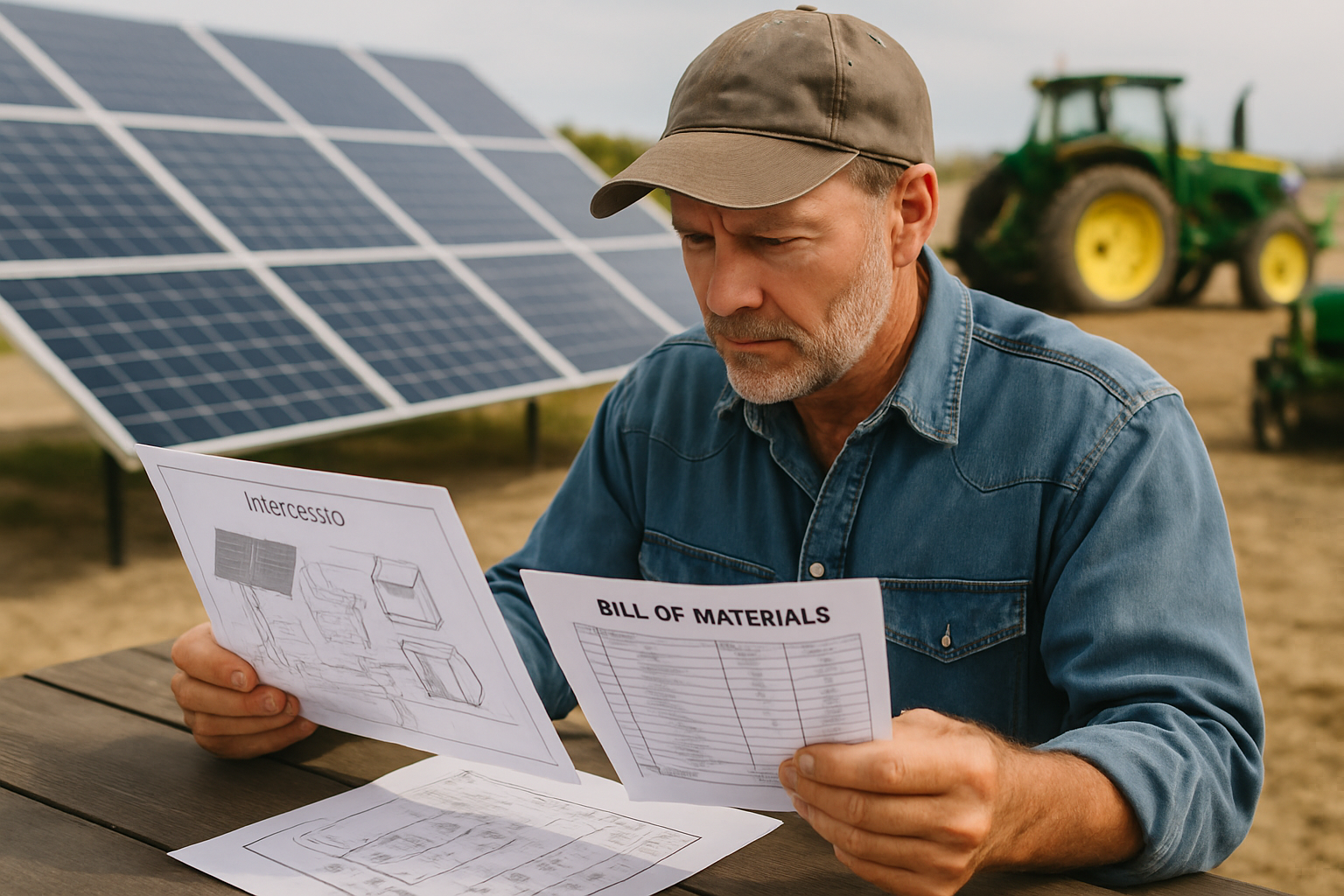Achieving energy independence through an off-grid system is a significant step. Many individuals consider building their own system (DIY) or purchasing a professionally installed solution (turnkey). The initial price tag often drives this decision, but a true financial comparison requires looking beyond upfront expenses. You need a comprehensive view of costs over the system's entire lifespan. This is where the Levelized Cost of Electricity (LCOE) becomes your most valuable tool.

Understanding Levelized Cost of Electricity (LCOE)
LCOE offers a standardized way to compare different energy generation methods by calculating the average cost of producing one unit of electricity over an asset's lifetime. For off-grid systems, this means determining the cost per kilowatt-hour (kWh) your system generates throughout its operational period. It moves beyond just the purchase price, incorporating all costs and the total energy output.
What LCOE Encompasses
The LCOE formula considers several critical financial elements:
- Capital Expenditure (CapEx): This includes all initial investment costs, such as equipment purchase, installation, permitting, and interconnection fees.
- Operational Expenditure (OpEx): These are the ongoing costs throughout the system's life, including maintenance, repairs, insurance, monitoring, and component replacements (like batteries).
- Fuel Costs: While solar and battery systems do not have traditional fuel costs, the cost of charging (if from a generator) or the opportunity cost of not selling excess power could be considered. For purely solar off-grid, this is typically zero.
- System Lifetime and Energy Production: The total amount of electricity the system is expected to produce over its operational life.
The International Renewable Energy Agency (IRENA) highlights the complexity of estimating the Levelized Cost of Storage (LCOS) for stand-alone energy storage projects, noting that economic viability depends on operational profiles, market signals, and ancillary services. However, a revenue requirement framework can provide a transparent baseline for assessing storage costs, accounting for capital and O&M costs over time. IRENA's "Renewable Power Generation Costs in 2024" emphasizes that hybrid systems, combining solar PV with battery storage, are increasingly deployed to enhance grid flexibility and reduce curtailment.
Why LCOE is Crucial for Off-Grid Decisions
Focusing solely on the initial purchase price can be misleading. A system with a lower upfront cost might have higher maintenance needs or a shorter lifespan, leading to a higher LCOE. Conversely, a more expensive initial investment could offer superior efficiency, durability, and a longer operational life, resulting in a lower LCOE and better long-term value. LCOE helps you compare apples to apples, providing a clear financial metric for your off-grid energy investment.
Deconstructing DIY Off-Grid Costs
Building your off-grid system can offer a sense of accomplishment and potential savings on labor. However, a thorough LCOE calculation for a DIY approach must account for more than just component prices.
Initial Component and Soft Costs
- Bill of Materials (BOM): This includes core components like high-performance LiFePO4 batteries, solar panels, solar inverters, charge controllers, mounting hardware, wiring, conduits, and safety disconnects. Sourcing these components individually can sometimes yield savings, but it requires careful research to ensure compatibility and quality.
- Tools and Equipment: You might need specialized tools for electrical work, panel installation, and system testing. These are often one-time purchases that add to your initial outlay.
- Permitting and Inspections: Even off-grid systems may require local permits and inspections to ensure safety and compliance with building codes. Navigating these processes takes time and can incur fees.
- Design and Engineering: Unless you have professional experience, designing an efficient, safe, and appropriately sized system can be complex. Errors in design can lead to inefficiencies, safety hazards, or premature component failure.
- Shipping and Logistics: Coordinating multiple component deliveries from different suppliers can add significant shipping costs and logistical challenges.
Hidden Labor and Long-Term Considerations
- Your Time: Your time has value. The hours spent researching, designing, sourcing, installing, and troubleshooting your system represent a significant investment. Quantify this by assigning an hourly rate to your efforts.
- Learning Curve and Reworks: If you are new to solar and energy storage, expect a learning curve. Mistakes can lead to costly reworks, damaged components, or inefficient operation, directly impacting your LCOE.
- Maintenance and Troubleshooting: As the system owner, you are responsible for all maintenance. Diagnosing issues, sourcing replacement parts, and performing repairs fall squarely on your shoulders.
- Warranty Management: With individual components, you manage multiple warranties from different manufacturers. This can complicate claims and replacements if an issue arises within the integrated system.
Analyzing Turnkey Off-Grid Solutions
A turnkey off-grid system provides a complete, ready-to-use solution, handled by professionals. While the upfront cost might appear higher, the value proposition often extends far beyond the initial price.
Comprehensive Service and Expertise
- Integrated Design and Engineering: Professionals design a system optimized for your specific energy needs and location, ensuring all components work seamlessly together. This includes proper sizing of lithium batteries, solar panels, and inverters for maximum efficiency and longevity.
- Professional Installation: Experienced installers ensure the system is installed safely, correctly, and to code, minimizing the risk of errors and potential reworks.
- Permitting and Compliance: Turnkey providers typically handle all necessary permits and ensure the system complies with local regulations, saving you time and potential headaches.
- Quality Components and Sourcing: Reputable providers source high-quality, reliable components, often benefiting from bulk purchasing discounts and established supply chains.
Enhanced Reliability and Support
- System-Level Warranties: Many turnkey solutions come with comprehensive system warranties, covering components and labor. This simplifies troubleshooting and provides peace of mind.
- Ongoing Support and Maintenance: Professional installers often offer maintenance plans and technical support, ensuring your system operates optimally and addressing any issues promptly.
- Reduced Risk: Professional installation reduces the risk of electrical hazards, equipment damage, and system underperformance. This contributes to a more reliable and safer energy supply.
- Optimized Performance: Expertly designed and installed systems typically achieve higher performance and efficiency, leading to greater energy production over their lifespan and a lower LCOE.
Applying LCOE to Your Decision
To make an informed choice, you must quantify the costs and benefits of both DIY and turnkey approaches using the LCOE framework. This involves estimating all costs over the system's expected life and its total energy output.
Calculating LCOE: A Simplified Approach
The general formula for LCOE is:
LCOE = (Sum of all costs over system lifetime) / (Sum of energy produced over system lifetime)
Let's consider a 20-year lifespan for an off-grid solar and battery system. You will need to estimate:
- Initial Capital Costs: This includes all equipment, installation fees (for turnkey), tools (for DIY), design, and permitting.
- Annual Operating Costs: Estimate annual maintenance, insurance, and monitoring.
- Replacement Costs: Batteries, for instance, typically have a shorter lifespan (e.g., 10-15 years for LiFePO4) than solar panels (25+ years). Factor in the cost of replacing batteries once or twice over the 20-year period.
- Total Energy Production: Estimate the average daily kWh production from your solar panels, accounting for seasonal variations and system degradation over time. Multiply this by the number of days in the system's lifetime.
For DIY, remember to include the monetary value of your time and potential costs of reworks or troubleshooting. For turnkey, factor in the premium for professional services and extended warranties.
Comparative Analysis: DIY vs. Turnkey LCOE Factors
Here is a simplified comparison of factors influencing LCOE for both approaches:
| Factor | DIY Off-Grid System | Turnkey Off-Grid System |
|---|---|---|
| Initial Capital (CapEx) | Lower component cost, but add tools, shipping, design, and your time. | Higher upfront package price, includes all components, design, and installation. |
| Operational Costs (OpEx) | Self-managed maintenance, sourcing parts, troubleshooting time. | Professional maintenance plans available, system-level support. |
| Component Replacements | Your responsibility to source and install. | Often covered by system warranties or professional service. |
| System Lifespan/Durability | Dependent on installation quality and component choices. | Optimized design and professional installation often lead to longer, more reliable operation. |
| Energy Production | Potential for suboptimal performance if not expertly designed/installed. | Engineered for maximum efficiency and consistent output. |
| Warranties | Individual component warranties, managed by you. | Comprehensive system warranties, simplified claims. |
| Risk (Safety, Performance) | Higher risk due to inexperience, potential for errors. | Lower risk due to professional expertise and adherence to standards. |
| Time Investment | Very high personal time commitment for all stages. | Minimal personal time investment after initial consultation. |
The marginal system cost of electricity, as defined by the U.S. Department of Energy (DOE), considers the cost of providing the next unit of electricity while meeting all major grid services and complying with policies. It reflects both long-run capital expenditures and variable operating costs. Energy.gov resources often delve into these detailed cost metrics for various energy systems.
Making the Right Choice for Your Energy Independence
The decision between a DIY and a turnkey off-grid system is deeply personal, balancing financial considerations with your technical skills, available time, and risk tolerance. While DIY can offer initial component savings and a rewarding experience, the long-term LCOE can sometimes be higher when factoring in all hidden costs, your time, and potential inefficiencies or reworks.
Turnkey solutions, though often having a higher upfront cost, can provide peace of mind through professional design, installation, comprehensive warranties, and ongoing support. This often translates to a lower LCOE over the system's lifetime due to optimized performance, enhanced reliability, and reduced unforeseen expenses.
Evaluate your specific situation carefully. Calculate the LCOE for both scenarios, considering all factors discussed. This methodical approach will empower you to choose the path that best aligns with your financial goals and desire for reliable, scalable energy independence.
FAQ
What is LCOE for off-grid systems?
LCOE, or Levelized Cost of Electricity, for off-grid systems is the average cost of producing one unit of electricity (per kWh) over the entire operational lifespan of your system. It includes initial capital costs, ongoing operational and maintenance expenses, and any component replacement costs, divided by the total electricity generated.
Are DIY off-grid systems always cheaper?
Not necessarily. While DIY systems often have lower upfront component costs, a comprehensive LCOE analysis frequently reveals hidden expenses. These can include the cost of specialized tools, shipping, permitting, your time investment, potential reworks due to errors, and individual component warranty management. These factors can increase the overall lifetime cost, making the LCOE higher than a professionally installed turnkey system.
What hidden costs should I consider for DIY?
For a DIY off-grid system, consider the cost of specialized tools, shipping for multiple components, fees for permits and inspections, the monetary value of your time spent on research, design, and installation, and potential costs for troubleshooting or fixing errors. Also, factor in the complexity of managing multiple individual component warranties.
How do warranties differ between DIY and turnkey?
With DIY, you typically receive individual warranties for each component (e.g., solar panels, batteries, inverters) from different manufacturers. You are responsible for managing these warranties and diagnosing which component is at fault. Turnkey solutions often come with a comprehensive system-level warranty from the installer, covering both components and labor, simplifying support and claims.
References
- International Renewable Energy Agency (IRENA). "Renewable Power Generation Costs in 2024."
- International Energy Agency (IEA). "Next Generation Wind and Solar Power (Full Report)." 2016.
- U.S. Department of Energy (DOE). "Solar Energy."





Leave a comment
All comments are moderated before being published.
This site is protected by hCaptcha and the hCaptcha Privacy Policy and Terms of Service apply.